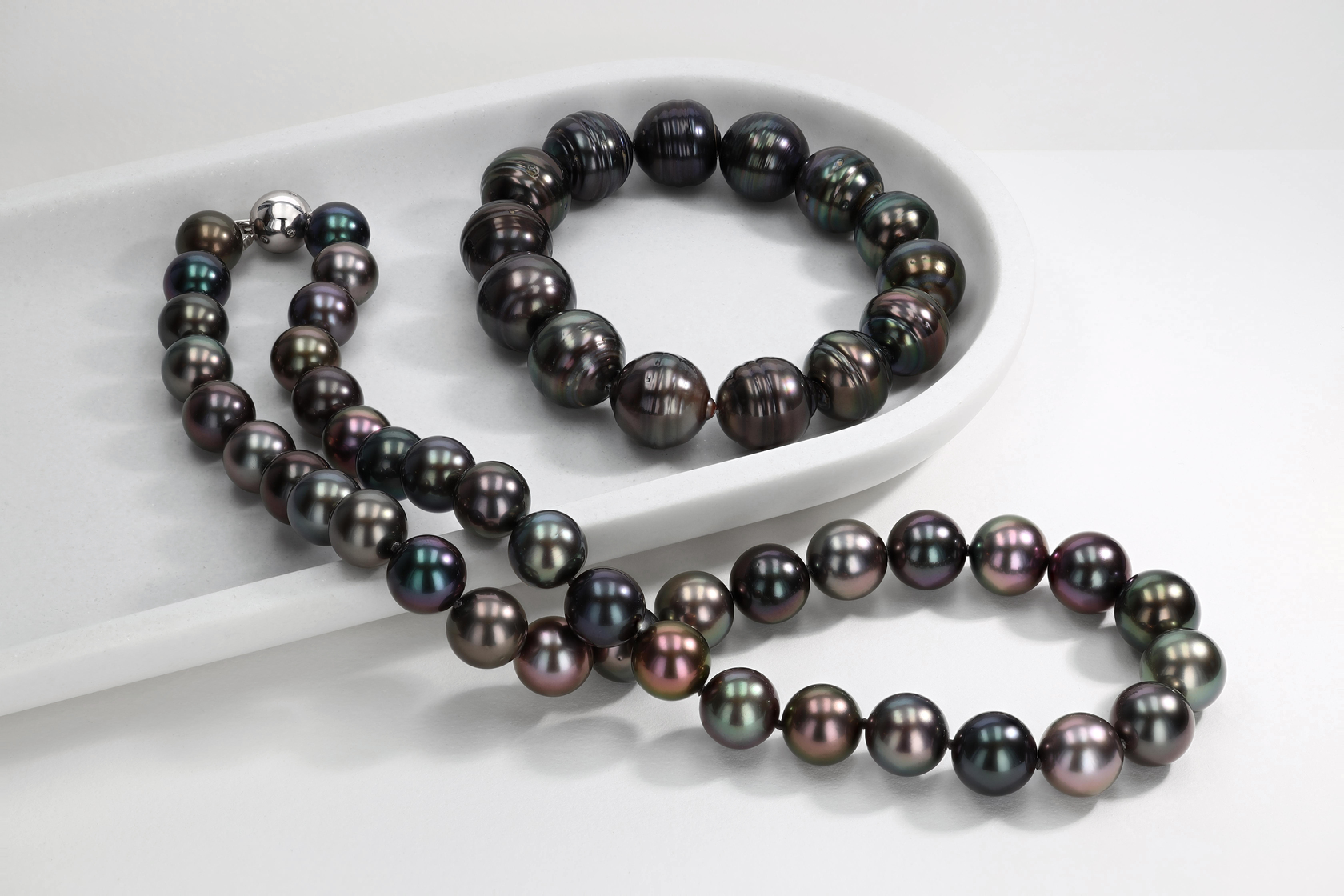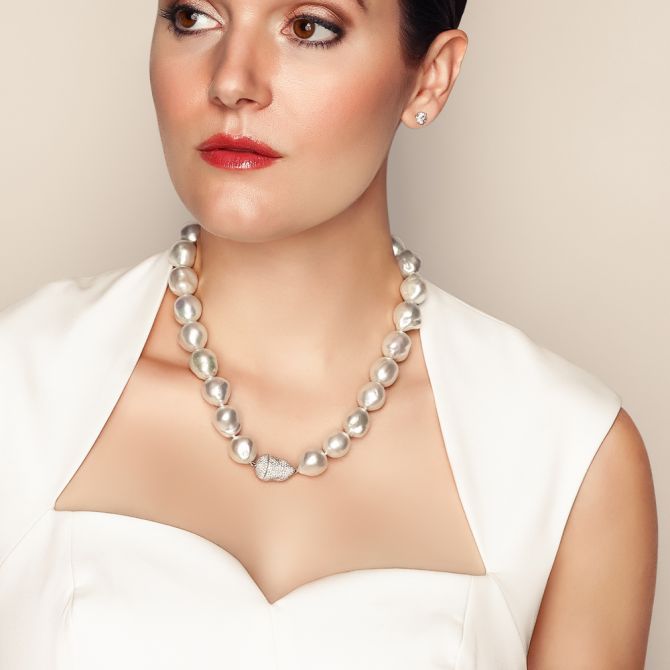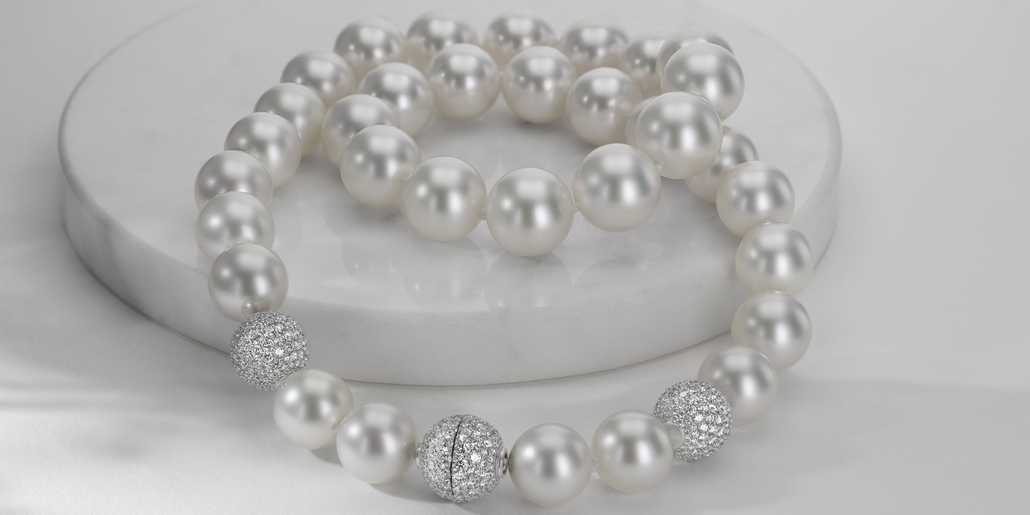Before learning how to identify real pearls, it’s helpful to understand what they are. Real pearls are organic gems formed within the tissue of a living mollusk, like an oyster or a mussel. They fall into two main categories: natural and cultured.
Learn everything you need to know about natural and cultured pearls in our Pearl Guide.
Imitation or fake pearls, on the other hand, are man-made beads. They are typically crafted from glass, ceramic or plastic and coated with a pearlescent substance to mimic the look of a real pearl.
Keep reading for our four ways to tell if a pearl is real.
Pearl Tests
You don’t always need special equipment to get a good idea of whether a pearl is real. Here are a few simple tests you can perform at home.
Pearl Texture and Temperature
Real pearls feel cool to the touch when you first pick them up and warm quickly against your skin. They are also denser than most imitations, giving them a slightly heavier feel for their size. Fake pearls, especially those made from plastic or glass, tend to feel lighter and match room temperature right away.
You can also lightly rub two pearls together. Authentic pearls feel slightly gritty, while imitation ones glide smoothly because of their coated surface.
Pearl Luster
A pearl’s luster is one of its most defining features. Genuine pearls possess a rich, complex luster that seems to glow from within, revealing layers of subtle iridescence and depth that shifts with movement, especially under natural light. In contrast, imitations appear flat, overly shiny or glass-like, with a shallow, uniform shine that sits on the surface. Authentic pearls may also display delicate overtones, soft hints of rose, green or silver, over their main body color—details that are nearly impossible to replicate.

Pearl Shape and Size
Real pearls are products of nature, and like all natural creations, they are rarely perfect. Even in a carefully matched strand, no two will be exactly alike. You will likely notice minor imperfections, such as tiny blemishes, bumps or variations in shape. Perfectly round, flawless pearls are exceptionally rare and command a high price. In contrast, imitation pearls tend to appear too uniform, with identical size, shape and luster, giving the strand an unnaturally consistent look.

Real Pearl Drill Hole
Examine the holes where the pearls are strung. In genuine pearls, the drill holes usually have sharp, well-defined edges and you may notice layers of nacre, like growth rings, around the opening. In imitation pearls, the coating around the hole often appears thin, chipped or flaked, revealing the glass or plastic bead beneath. The edges may look rounded, melted or painted on, rather than clean and crisp as in real pearls.
When in doubt, bring your pearls to a trusted jeweler, like Borsheims. Our experts can perform advanced tests to confirm authenticity and provide detailed information about the type of pearl (Akoya, South Sea, Tahitian or Freshwater) and its quality grade.
The most reliable way to ensure you’re purchasing authentic, high-quality pearls is to buy from a trusted luxury jeweler. At Borsheims, we source our pearls from the world’s finest designers. Explore our exquisite pearl collections online at Borsheims.com today.

